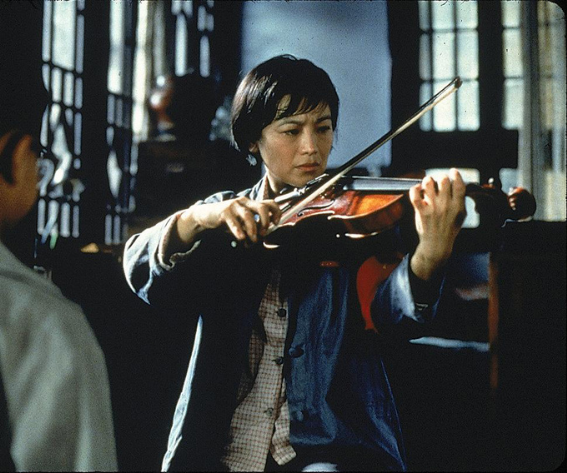In the last few years, virtual production has gone from being experimental technology to being a mainstream part of filmmaking. What was once exclusive to expensive science fiction blockbusters is now an incredibly powerful storytelling tool within the reach of indie creators, television studios, and even advertising agencies. The driving force of this revolution is LED volumes and real-time engines such as Unreal Engine, which are transforming the way we construct worlds, shoot scenes, and engage with the creative process.
So just exactly what is virtual production, and how is it disrupting everything?
What is Virtual Production?
Virtual production blends physical and virtual filmmaking techniques, allowing filmmakers to observe and direct digital worlds in real-time. In contrast to the traditional green screen, which requires extensive post-production compositing, virtual production uses massive LED screens to project high-resolution, photorealistic environments in the background behind live actors on set during filming. The virtual backgrounds adapt dynamically with camera motion because of real-time rendering engines like Unreal Engine or Unity.
This technology allows directors, DPs, and actors to work together on location without being there.
The Technology Behind the Magic
The center of modern virtual production is the LED wall. Imagine a 270-degree curving wall made up of high-resolution LED panels, occasionally supplemented by a ceiling projection, forming a complete “volume.” These panels display real-time environments: mountains, cities, alien worlds that adjust to the camera’s angle.
With camera tracking rigs and real-time 3D engines, parallax is preserved, and shots have a depth feel and immersion that even green screens can’t replicate. Furthermore, the lighting of the screens naturally falls on the actors and props, which adds to realism as well as the lack of hours of post-production color grading.
From The Mandalorian to Indie Sets
Disney+’s The Mandalorian was a massive game-breaker in getting virtual production into the mainstream. With its very high-density alien environments and close-to-the-bone production timelines, it was the perfect showcase for the tech. Rather than building dozens of sets or shooting miles away to distant locations, the production team used an LED volume to design everything from desert worlds to deep-space interiors. Now it’s available for blockbusters.
Equipment like ARwall, PRG, and Disguise is making it possible to have less costly alternatives for independent filmmakers. A 20-foot LED screen is no longer a fantasy but a viable investment for a mid-range studio. Couple that with low-cost real-time solutions like Unreal Engine, and virtual production is suddenly everyone’s sandbox, provided they possess creativity and technical curiosity.
Creative Advantages
One of the big pluses about virtual production is creative flexibility. Directors can plan a visit ahead of time to virtual locations and storyboard shots in 3D before a set is ever built. Set designers can collaborate with digital artists and blend practical and virtual elements seamlessly together. And cinematographers can illuminate a scene using a blend of physical and virtual light sources for optimal outcome.
Actors also benefit greatly. Instead of reacting to green screens or tennis balls on sticks, they can get immersed in realistic environments that respond to their movements. This enhances performances and creates more natural interactions with the environment around them.
Time and Budget Benefits
Virtual production saves a tremendous amount of location cost, travel cost, and set construction time. Reshoots are easier when you can reload the same virtual world with a few clicks. It’s also safer, especially in a post-pandemic world, allowing smaller crews to work efficiently in contained environments.
That being said, upfront setup fees still can be prohibitively high, particularly for LED panels and more advanced camera tracking. However, as more studios are offering rentable stages and more and more technology providers are entering the fray, costs are slowly diminishing.
The Game Engine Crossover
At the heart of it all is Unreal Engine, a software originally created for developing video games but now the industry powerhouse behind filmmaking. It is a powerhouse that can utilize real-time rendering, particle simulation, dynamic lighting, and physics simulations, ideal for building rich digital worlds.
The blurring of the lines between film and games is becoming more apparent. In fact, some virtual productions are using level design methodologies from gaming: modular sets, interactive lighting, and branching scene logic, for example. This blurring even extends into content marketing and gamified narrative.
The Future is (Virtually) Here
Virtual production is not some trendy gimmick: it’s an upheaval. As technology gets easier to use and costs come down, even student filmmakers will be able to construct entire worlds without ever stepping onto a soundstage.
From pre-visualization to final shot, the marriage of physical and virtual filmmaking is enabling more ambitious, faster, and more creative productions. Whether you’re filming a sci-fi epic or a low-budget indie drama, virtual production can potentially offer the creative freedom and technical edge to bring your vision to life.
In this new digital realm, directors are free from the physical restrictions of space. And as the world of video games has pushed the boundaries with interactive storytelling and immersive architecture, film is now headed for a renaissance of its own: LED screen by LED screen.









Leave a reply